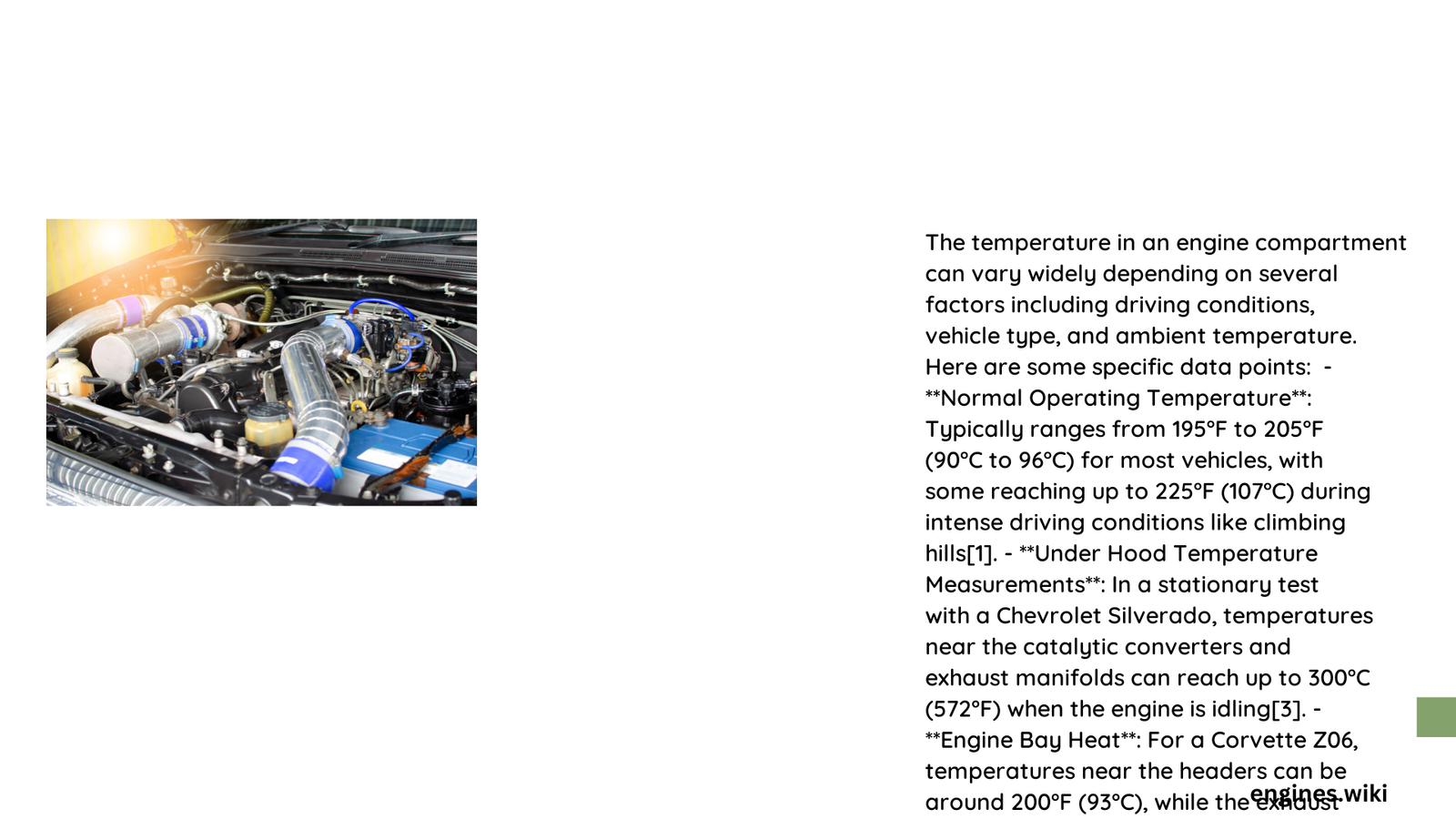Engine compartments experience extreme temperature variations that can range from 150°F to over 1000°F, depending on driving conditions, engine type, and load. Understanding these temperature dynamics is crucial for vehicle performance, component longevity, and preventing potential mechanical failures. This comprehensive guide explores the intricate thermal landscape of automotive engine environments.
What Temperatures Occur During Idle Conditions?
During idle, engine compartment temperatures can be surprisingly significant. Typical underhood temperatures range between 150°F to 250°F (65°C to 120°C), with specific components experiencing even higher heat levels:
| Component | Temperature Range |
|---|---|
| Exhaust Manifold | 500°F – 600°F |
| Oil Pan | 200°F – 250°F |
| Catalytic Converter | 250°F – 300°F |
Factors Influencing Idle Temperature
- Ambient environmental temperature
- Engine design
- Cooling system efficiency
- Vehicle age and maintenance
How Do Temperatures Change During High-Performance Driving?

When an engine transitions from idle to high-load scenarios, temperature dynamics dramatically shift:
- Exhaust Manifold Temperatures
- Can exceed 1000°F (538°C)
-
Directly correlates with engine speed and load
-
Underhood Air Temperature
- Increases substantially with engine RPM
- Potential auto-ignition risk for engine compartment fluids
What Maximum Temperatures Can Different Engine Types Reach?
Gasoline Engines
- Coolant temperatures up to 290°F (145°C)
- Racing engines operate at extreme thermal conditions
- Performance-oriented designs prioritize heat management
Diesel Engines
- Slightly higher temperature tolerances
- Comparable thermal ranges to gasoline engines
- Enhanced structural materials for heat resistance
How Do Vehicles Manage Extreme Heat?
Automotive engineers employ multiple strategies to control engine compartment temperatures:
- Advanced Cooling Systems
- Electronic thermostats
- Optimal coolant temperature range (180°F – 220°F)
-
Sophisticated heat dissipation mechanisms
-
Heat Shielding Materials
- Polycarbonate shields
- Acrylic protective layers
- Thermal resistance up to 240°F
What Are Potential Risks of Prolonged High Temperatures?
Continuous exposure to extreme heat can lead to:
– Premature component wear
– Coolant system failures
– Potential engine breakdown
– Reduced overall vehicle performance
Practical Maintenance Recommendations
- Regular coolant level checks
- Thermostat functionality assessment
- Inspect heat shielding materials
- Monitor temperature gauges
- Perform scheduled cooling system maintenance
Technical Insights and Measurements
- Idle Temperature Range: 150°F – 250°F
- High-Load Peak Temperature: 1000°F+
- Optimal Coolant Temperature: 180°F – 220°F
Conclusion
Understanding engine compartment temperatures is crucial for vehicle owners and automotive enthusiasts. By recognizing thermal dynamics, drivers can implement proactive maintenance strategies and optimize their vehicle’s performance and longevity.
